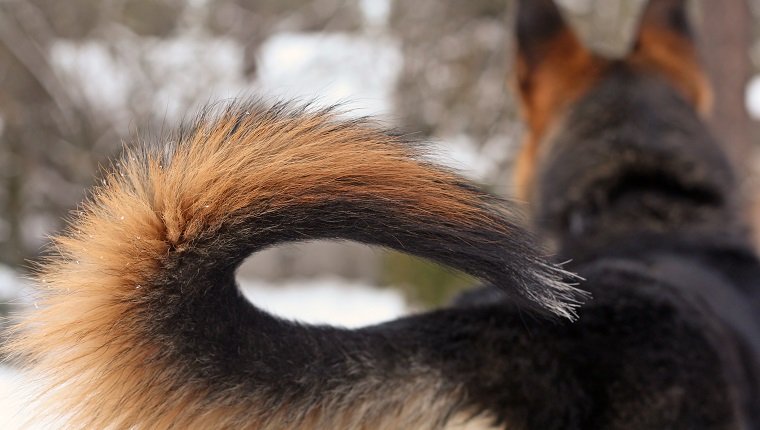
(Picture Credit: crisserbug/Getty Images)
Do you think your pet pal wags their tail because they’re happy to see you? You may be correct if that tail is pulling to the right, but more on that later!
A dog’s tail is just one of their methods of communication, and according to Psychology Today, certain types of wags indicate specific emotions. But a dog’s tail has many other uses, too.
Here are some fun facts that might help you figure out what your dog is doing or saying with their tail!
Fact #1: Tail Speed And Height Show Moods
(Picture Credit: Getty Images)
A broad swishing wag is friendly and unchallenging, while a slight wag when meeting someone new is a tentative “wait and see” greeting.
A slow wag of the tail held at half-mast is neutral, indicating that the dog is neither excited nor anxious, but a high-sitting tail making rapid back and forth motions can be a sign of feeling threatened.
Fact #2: Tail To The Right Is Happy, Tail To The Left Is Unhappy

(Picture Credit: Getty Images)
The left brain controls the right side of the body, and the right brain controls the left side of the body. So positive feelings pull a dog’s tail to the right and negative feelings pull it to the left.
Dogs can actually pick up this wagging direction. Right wagging indicates happiness and means they are approachable. Leaning left could indicate anxiety or fear. Lefty waggers should be approached with caution.
Fact #3: Dogs Don’t Wag Alone
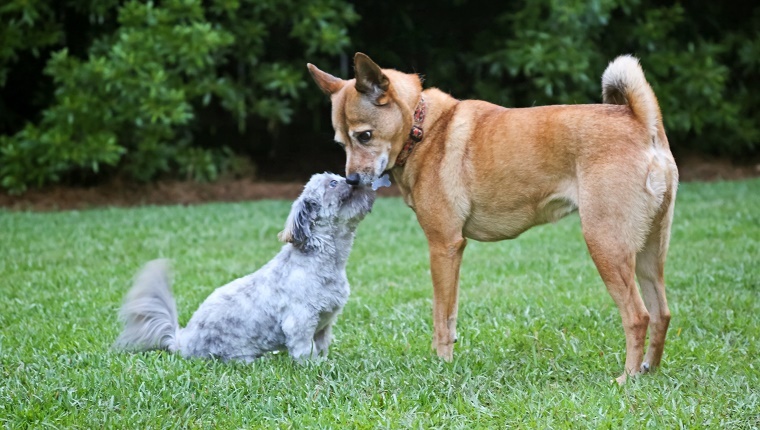
(Picture Credit: Getty Images)
Dogs don’t wag their tails when they are alone.
Research has proven that wagging is a behavior they only exhibit when around others.
Fact #4: Tail Talking Starts Early

(Picture Credit: Getty Images)
Tail shaking is an acquired skill puppies learn when they are old enough to start communicating.
This usually starts at about the 45-days-old mark with “tail talking” practiced with mom and any siblings or companion dogs.
Fact #5: There Are Many Reasons For Tail Chasing
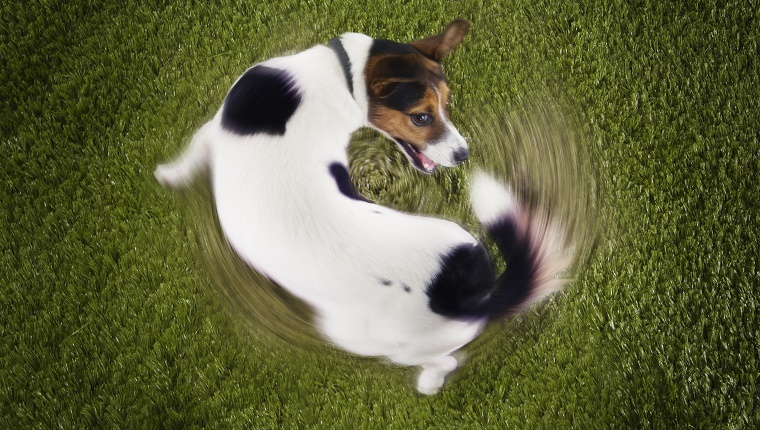
(Picture Credit: Getty Images)
Dogs chase their own tails for a variety of reasons. It might be curiosity, exercise or just an amusing activity. It could even be part of their natural predatory instinct.
If your dog chases their tail excessively, check first for fleas!
Some animal experts think that dogs who regularly run in circles chasing their own tails might be suffering from obsessive-compulsive disorder (OCD).
Fact #6: Tails Help With Balance
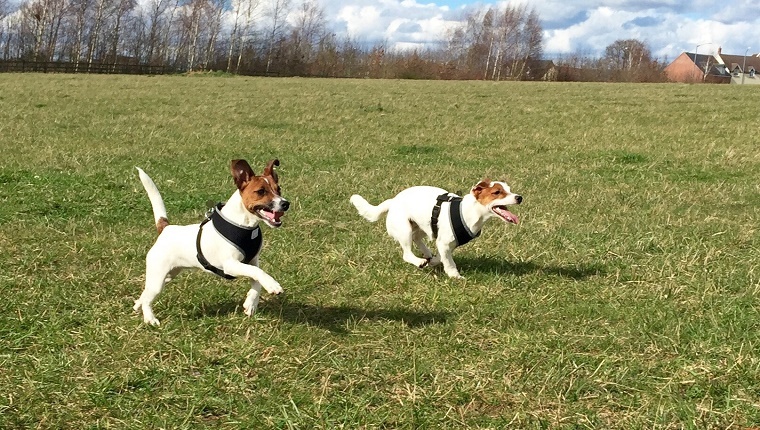
(Picture Credit: Getty Images)
Dogs’ tails have evolved into appendages that help them with balance. Athletic breeds use the tail as a counter-balance when running, leaping and turning.
Even dogs with short or docked tails can be balanced, especially if they’ve had that shorter tail since puppyhood.
If a dog injures or loses part of the tail in adulthood, their athletic skills will change as the animal is thrown off their normal balance. Luckily dogs can adjust and relearn those skills over time.
Fact #7: Tails Help Dogs Swim
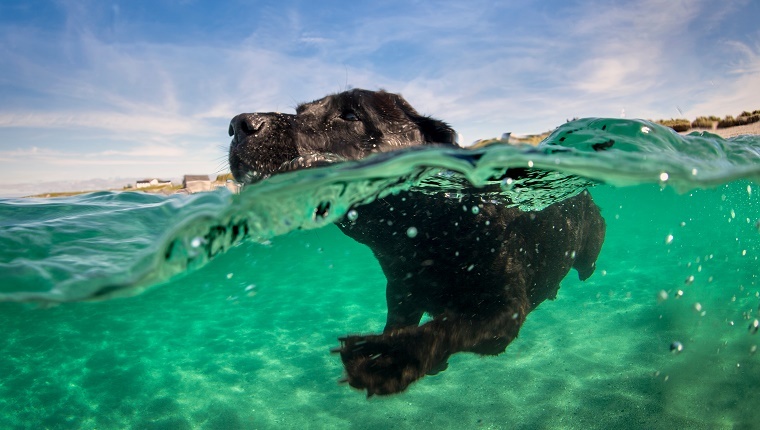
(Picture Credit: Getty Images)
Tails are awesome help to swimming dogs!
Some dogs are able to use their tails as a rudder in the water, and Retriever breeds are especially good at this.
Fact #8: Tails Spread Scent

(Picture Credit: Getty Images)
A dog’s tail helps them spread their scent.
Animal Planet says that alpha dogs who hold their tails high can release more scent from the anal glands. Scared dogs who hold their tails between their legs are submissively covering their scent glands.
The swoosh of a tail helps fan the scent into the air.
Fact #9: The Tail Is Part Of The Spine

(Picture Credit: Getty Images)
The tail is an extension of the spine, but it’s far more flexible. It’s also more exposed and active, so there’s a greater chance of injury.
A dog’s tail has its own set of muscles, anchors, and discs.
Fact #10: Hair Of The Dog Comes From The Tail

(Picture Credit: Getty Images)
The term “hair of the dog” originally referred to the tail.
Roman author and naturalist Pliny the Elder, born 23 AD, believed that the way to get rid of rabies was to put ashes in the wound, and those ashes were supposed to come from the tail hair of the biting dog!
We have no proof that his method was ever tested, but plucking hair from the tail of a rabid animal doesn’t seem like a safe or smart idea.
Which one of these facts surprised you the most? What other fascinating facts do you know about your dog’s tail? Let us know in the comments below!